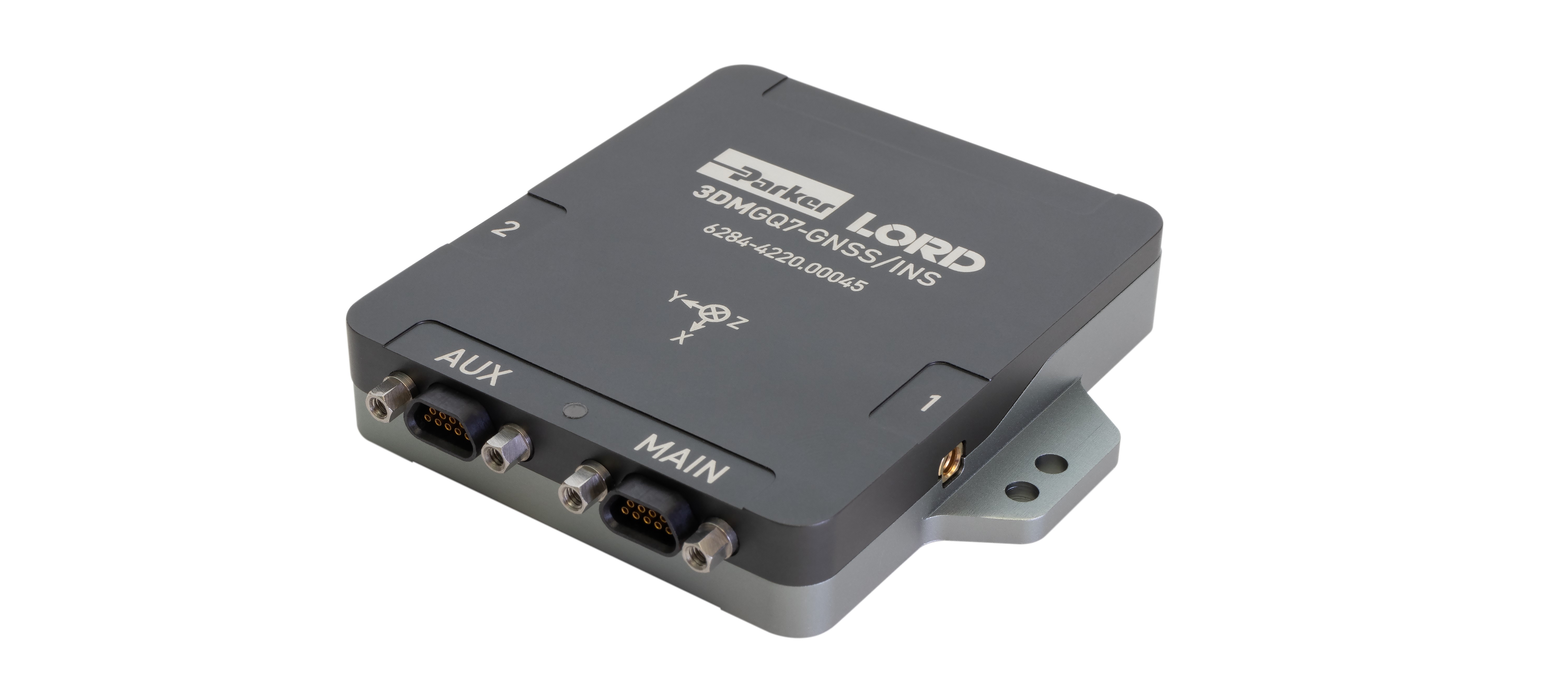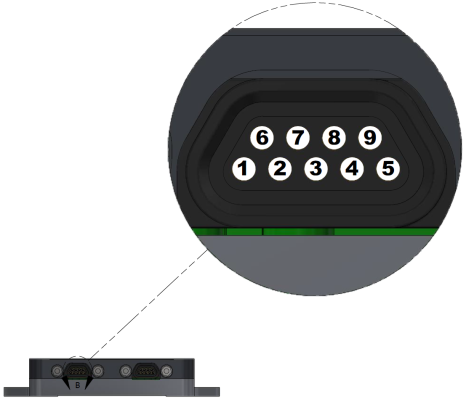
Main/Aux
The 3DM-GQ7 provides 2 Micro DB9 connectors labeled MAIN and AUX. These connectors support USB, RS232, GPIO, and power. Each is discussed in more detail below.

|
|
MAIN
This port is the primary port for all communications. Data streaming and sensor configuration is done through this port. MAIN also support other features, such as GPIO, odometer inputs, and power.
AUX
The primary purpose of this port is to support RTK correction input (see GNSS/RTK). Like MAIN, it can also support other features, such as GPIO and power, but it does not support odometer.
USB and RS-232 (serial)
All data communications to the 3DM-GQ7 go through two communication ports, MAIN and AUX. Both ports support USB and RS-232 communications.
Only one communication method can be used on each port at a time. For example, MAIN can use RS-232 and AUX can use USB simultaneously, but MAIN cannot use RS-232 and USB at the same time.
The 3DM-GQ7's internal logic selects the appropriate communication mode based on what is plugged into it (USB or RS232).
NOTE: Supported baud rates for RS-232 are 115200, 230400, 460800, 921600.
GPIO
The GPIO can be used for a variety of functions, such as a pulse-per-second (PPS) input or output for precision timestamps. See User GPIO for an overview of the various features offered by the GPIO pins.
| Connector Pin | GPIO Pin | General | PPS | Odometer |
|---|---|---|---|---|
| Main pin 7 | 1 | X | X | "A" input |
| Main pin 9 | 2 | X | "B" input | |
| Aux pin 7 | 3 | X | X | |
| Aux pin 9 | 4 | X |
Power
V primary supports 4.2-16V DC. V auxiliary supports 4.2-16V DC. See Powering for a thorough discussion of the 3DM-GQ7's flexible powering options.